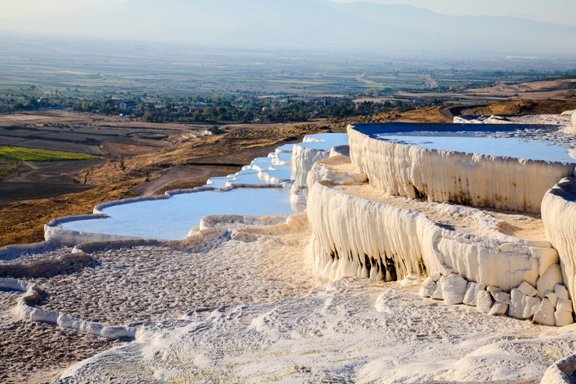Q: What are Epsom Salts made of, and why are they called that?
Epsom Salts is another name for magnesium sulfate, a magnesium salt sometimes abbreviated as MgSO4. According to the United States Dispensatory, Dr. Grew documented obtaining magnesium sulfate crystals from evaporating the mineral water of Epsom, England, in 1675.
The resulting magnesium sulfate powder was called Epsom Salts. The concentration of magnesium in the mineral water from the Seiditz Spring in Germany was nearly identical to that of Epsom, and the terms Seiditz Salts and Epsom Salts were used interchangeably to refer to magnesium sulfate. Over time, only the name Epsom Salts stuck.
By the late 1880s, a new process was developed for producing both table salt and Epsom salt. Instead of having to mine it, salt could be produced by evaporating water from the sea. After extracting the desirable sodium chloride from seawater, the leftover brine contained nearly pure magnesium sulfate.
In Colonial America, magnesium sulfate was produced from veins of rock near Baltimore and southern Pennsylvania. Today’s Epsom Salts are still produced by evaporating seawater.
Magnesium sulfate is widely used today, both externally as either a poultice or solution for soaking and internally as a laxative. Often packaged in quart-sized milk cartons, Epsom Salts is a white, odorless powder that tastes salty and bitter.
Magnesium sulfate relieves constipation by helping fecal matter move through the colon and rectum. Many laxatives are derived from natural sources and were often added to patent medicines in America.
Laxatives are classified in two ways: by how they work and the intensity of their effect on your bowels. There are stimulant laxatives, bulk laxatives, saline laxatives, and emollients or stool softeners.
Magnesium sulfate is a saline laxative. An older way of grouping and naming laxatives is by how powerful they affect your bowels. These 3 groups range from low to high intensity effect: “laxatives,” “purgatives,” and “drastics.” Depending on the concentration used, Epsom Salts can be either laxative or purgative.
Some liquid antacids like Maalox® and Mylanta® contain magnesium hydroxide. Less potent than magnesium sulfate, magnesium hydroxide has a milky white color, giving it the name “milk of magnesia.”
Another laxative containing magnesium is magnesium citrate, a clear liquid containing sodium bicarbonate and citric acid to make it fizzy. It’s sold in a glass bottle as citrate of magnesia.
How does Epsom Salts work? When you add the crystals to water, the result is concentrated, salty water. If you drink it, it will “pull” water out of your body and into your intestines, making your stool more liquid.
The increased watery bulk of your stool encourages it to move more quickly through your gut, colon, and rectum. The more concentrated the solution of magnesium sulfate, the more laxative effect it will give you.
Soaking in a solution of Epsom Salts dissolved in warm water helps shrink tissues surrounding an injury. Its ability to pull fluid out of swollen tissue can help reduce swelling and pain.
Soaking in warm Epsom Salts softens and shrinks the skin, making foreign bodies like splinters and insect stingers easier to remove. Some people add Epsom Salts to bath water for a whole body soak or a therapeutic bath to relieve muscle aches.
The Epsom Salt Council was formed in 1993 to encourage the use of Epsom Salts. Their website www.epsomsaltcouncil.org promotes this all-natural product, with suggestions for use in the garden, as a beauty aid, in crafts, and for health.
Epsom salts are safe when used externally for soaking, but be careful about using it by mouth. The amount of magnesium that is absorbed into your body can be unpredictable. One woman died from gargling with Epsom Salts due to absorbing excessive magnesium, causing her heart to stop.
Another woman almost died from heart block after using an enema made from 3 tablespoons of Epsom Salts dissolved in warm water. Two children went into cardiac arrest and one died after consuming several doses of a mega-mineral supplement containing magnesium.
If you use Milk of Magnesia or magnesium citrate for constipation, please DO NOT exceed the doses recommended on the label.


